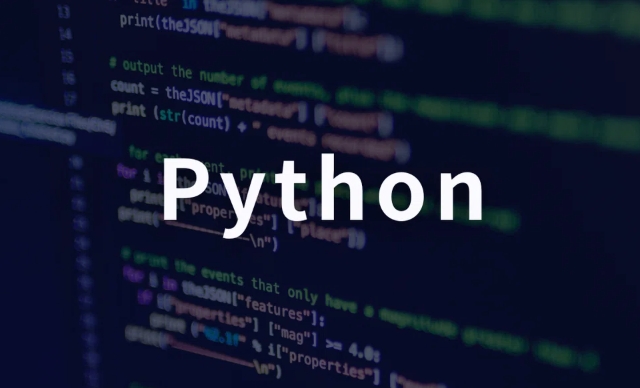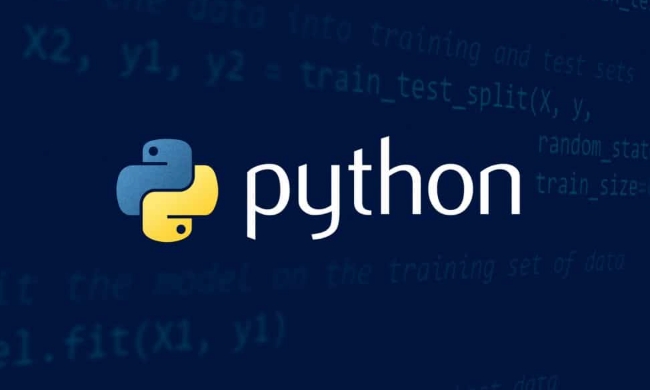Making HTTP requests using Python requests library
When using Python's requests library to initiate HTTP requests, you need to pay attention to key points such as parameter passing, exception handling, and session maintenance. 1. When transferring parameters to GET requests, the params parameter should be used instead of manually splicing the URL, which can automatically handle encoding and avoid security issues; 2. POST requests select data (form), json (JSON data) or files (file upload) parameters according to the scenario; 3. It is recommended to combine response.raise_for_status() and try-except to catch HTTP errors, and set timeout, control redirection and maximum number of retry times; 4. When you need to maintain login, use the Session object to automatically manage cookies, and temporary headers such as Authorization can be added through the headers parameter; 5. Sensitive information should be avoided hard coding, and it is recommended to use environment variables or configuration tools to manage them. Mastering these techniques can improve the stability and security of requests.

Using Python's requests library to make HTTP requests is a basic skill that many developers will use in daily life. It is simple and easy to use, and has comprehensive functions. Here are a few key points in the process of use, which will help you do this more stably and efficiently.

How to pass parameters when requesting GET?
When sending GET requests, the most common requirement is to add parameters to the URL. Don't spell strings manually at this time, using params parameter is the most convenient:
import requests
response = requests.get("https://api.example.com/data", params={"page": 2, "limit": 20}) This not only makes writing clear, but also automatically handles encoding problems. For example, spaces will be converted to , Chinese can also be processed normally. If you don’t do this, you will easily make mistakes if you fight yourself and may encounter security problems.

Sometimes you will see that there are already parameters on the URL, and params will be automatically followed and there will be no conflict. But it should be noted that if the parameters already in the original URL are added with the same key through params , they may be overwritten or repeated, so you have to pay attention to the logic yourself.
How to transfer data in POST request?
There are several common situations for POST requests: form submission, JSON data, and upload files. Different scenarios should be set with different parameters.

Form data (application/x-www-form-urlencoded)
Just usedataparameter to pass the dictionary:requests.post("https://example.com/login", data={"username": "test", "password": "123456"})JSON data (application/json)
It is recommended to usejsonparameter, which will automatically set Content-Type and serialize data:requests.post("https://api.example.com/create", json={"name": "John", "age": 30})Upload file (multipart/form-data)
Usefilesparameters, suitable for transferring pictures, documents, etc.:files = {"file": open("example.txt", "rb")} requests.post("https://example.com/upload", files=files)
Remember to close the files after using them, or use with open(...) to manage resources.
How to deal with exceptions and status codes?
Network requests cannot be 100% successful, so error handling must be added.
Let's look at the response status code first:
response = requests.get("https://example.com")
if response.status_code == 200:
print(response.json())
else:
print(f"Request failed, status code: {response.status_code}") However, there is a simpler way, just call response.raise_for_status() , which will throw exceptions when the status code is not 2xx, and it is very easy to use with try-except:
try:
response = requests.get("https://example.com")
response.raise_for_status()
except requests.exceptions.HTTPError as err:
print(f"HTTP error: {err}")In addition, there are also details such as connection timeout and redirection control:
- Timeout setting:
requests.get(url, timeout=5)to prevent the program from being stuck - Redirects are prohibited:
requests.get(url, allow_redirects=False) - Set the maximum number of retry times: it needs to be implemented with
SessionandHTTPAdapter
How to keep a session or bring cookie requests?
Some interfaces require login status, and you can use Session object to maintain the session:
session = requests.Session()
session.post("https://example.com/login", data={"user": "test", "pass": "123"})
response = session.get("https://example.com/profile")Session will automatically save the cookie and bring it to subsequent requests, which is equivalent to the behavior of the browser. It is more convenient and safer than manually adding headers every time.
If you just add a header temporarily, such as Authorization:
headers = {"Authorization": "Bearer your_token"}
response = requests.get("https://api.example.com/data", headers=headers)However, sensitive information should not be hard-coded in the code. It is recommended to use environment variables or configuration management tools.
Basically that's it. It is not difficult to send requests, but to use them stably and safely, you still have to pay more attention to these small details.
The above is the detailed content of Making HTTP requests using Python requests library. For more information, please follow other related articles on the PHP Chinese website!

Hot AI Tools

Undress AI Tool
Undress images for free

Undresser.AI Undress
AI-powered app for creating realistic nude photos

AI Clothes Remover
Online AI tool for removing clothes from photos.

Clothoff.io
AI clothes remover

Video Face Swap
Swap faces in any video effortlessly with our completely free AI face swap tool!

Hot Article

Hot Tools

Notepad++7.3.1
Easy-to-use and free code editor

SublimeText3 Chinese version
Chinese version, very easy to use

Zend Studio 13.0.1
Powerful PHP integrated development environment

Dreamweaver CS6
Visual web development tools

SublimeText3 Mac version
God-level code editing software (SublimeText3)
 How to handle API authentication in Python
Jul 13, 2025 am 02:22 AM
How to handle API authentication in Python
Jul 13, 2025 am 02:22 AM
The key to dealing with API authentication is to understand and use the authentication method correctly. 1. APIKey is the simplest authentication method, usually placed in the request header or URL parameters; 2. BasicAuth uses username and password for Base64 encoding transmission, which is suitable for internal systems; 3. OAuth2 needs to obtain the token first through client_id and client_secret, and then bring the BearerToken in the request header; 4. In order to deal with the token expiration, the token management class can be encapsulated and automatically refreshed the token; in short, selecting the appropriate method according to the document and safely storing the key information is the key.
 How to test an API with Python
Jul 12, 2025 am 02:47 AM
How to test an API with Python
Jul 12, 2025 am 02:47 AM
To test the API, you need to use Python's Requests library. The steps are to install the library, send requests, verify responses, set timeouts and retry. First, install the library through pipinstallrequests; then use requests.get() or requests.post() and other methods to send GET or POST requests; then check response.status_code and response.json() to ensure that the return result is in compliance with expectations; finally, add timeout parameters to set the timeout time, and combine the retrying library to achieve automatic retry to enhance stability.
 Python FastAPI tutorial
Jul 12, 2025 am 02:42 AM
Python FastAPI tutorial
Jul 12, 2025 am 02:42 AM
To create modern and efficient APIs using Python, FastAPI is recommended; it is based on standard Python type prompts and can automatically generate documents, with excellent performance. After installing FastAPI and ASGI server uvicorn, you can write interface code. By defining routes, writing processing functions, and returning data, APIs can be quickly built. FastAPI supports a variety of HTTP methods and provides automatically generated SwaggerUI and ReDoc documentation systems. URL parameters can be captured through path definition, while query parameters can be implemented by setting default values for function parameters. The rational use of Pydantic models can help improve development efficiency and accuracy.
 Python variable scope in functions
Jul 12, 2025 am 02:49 AM
Python variable scope in functions
Jul 12, 2025 am 02:49 AM
In Python, variables defined inside a function are local variables and are only valid within the function; externally defined are global variables that can be read anywhere. 1. Local variables are destroyed as the function is executed; 2. The function can access global variables but cannot be modified directly, so the global keyword is required; 3. If you want to modify outer function variables in nested functions, you need to use the nonlocal keyword; 4. Variables with the same name do not affect each other in different scopes; 5. Global must be declared when modifying global variables, otherwise UnboundLocalError error will be raised. Understanding these rules helps avoid bugs and write more reliable functions.
 Access nested JSON object in Python
Jul 11, 2025 am 02:36 AM
Access nested JSON object in Python
Jul 11, 2025 am 02:36 AM
The way to access nested JSON objects in Python is to first clarify the structure and then index layer by layer. First, confirm the hierarchical relationship of JSON, such as a dictionary nested dictionary or list; then use dictionary keys and list index to access layer by layer, such as data "details"["zip"] to obtain zip encoding, data "details"[0] to obtain the first hobby; to avoid KeyError and IndexError, the default value can be set by the .get() method, or the encapsulation function safe_get can be used to achieve secure access; for complex structures, recursively search or use third-party libraries such as jmespath to handle.
 How to parse an HTML table with Python and Pandas
Jul 10, 2025 pm 01:39 PM
How to parse an HTML table with Python and Pandas
Jul 10, 2025 pm 01:39 PM
Yes, you can parse HTML tables using Python and Pandas. First, use the pandas.read_html() function to extract the table, which can parse HTML elements in a web page or string into a DataFrame list; then, if the table has no clear column title, it can be fixed by specifying the header parameters or manually setting the .columns attribute; for complex pages, you can combine the requests library to obtain HTML content or use BeautifulSoup to locate specific tables; pay attention to common pitfalls such as JavaScript rendering, encoding problems, and multi-table recognition.
 Python def vs lambda deep dive
Jul 10, 2025 pm 01:45 PM
Python def vs lambda deep dive
Jul 10, 2025 pm 01:45 PM
def is suitable for complex functions, supports multiple lines, document strings and nesting; lambda is suitable for simple anonymous functions and is often used in scenarios where functions are passed by parameters. The situation of selecting def: ① The function body has multiple lines; ② Document description is required; ③ Called multiple places. When choosing a lambda: ① One-time use; ② No name or document required; ③ Simple logic. Note that lambda delay binding variables may throw errors and do not support default parameters, generators, or asynchronous. In actual applications, flexibly choose according to needs and give priority to clarity.
 Can a Python class have multiple constructors?
Jul 15, 2025 am 02:54 AM
Can a Python class have multiple constructors?
Jul 15, 2025 am 02:54 AM
Yes,aPythonclasscanhavemultipleconstructorsthroughalternativetechniques.1.Usedefaultargumentsinthe__init__methodtoallowflexibleinitializationwithvaryingnumbersofparameters.2.Defineclassmethodsasalternativeconstructorsforclearerandscalableobjectcreati







